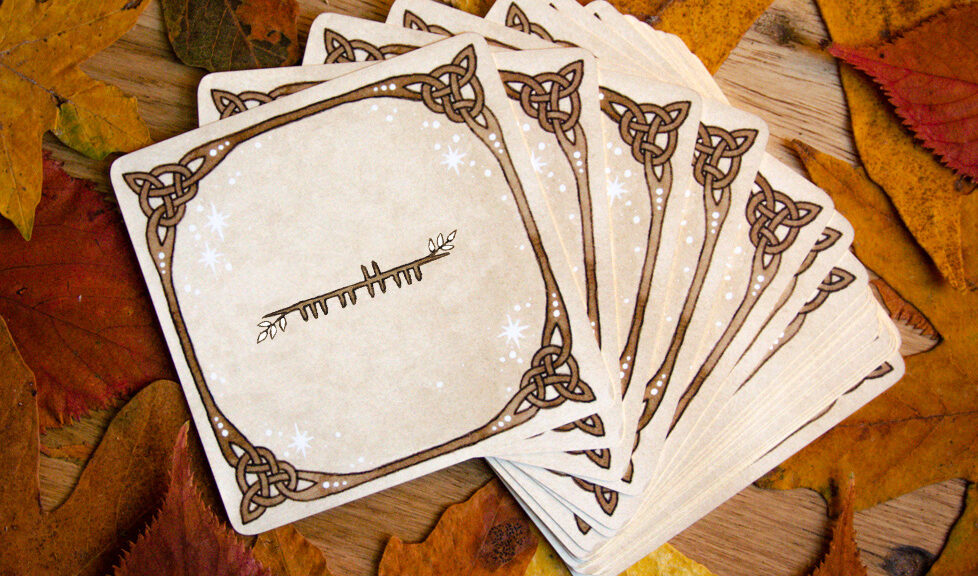
Flow Ogham Oracle – The Ogham Alphabet
🌿 What is Ogham?
The word Ogham, or Ogam, refers to an Early Medieval Irish alphabet. In its original form, it is made of twenty letters arranged in four groups called aicmi. Five additional letters were later introduced to the alphabet.
Writing the different letters of Ogham is made by drawing a series of parallel lines, from one to five, across a single one which can be vertical or horizontal depending on how you choose to write it. For the first aicme, the lines are drawn on the right side of the vertical line, or downward of the horizontal one. The second one is similar, but going to the left or upward. The third aicme brings a little change, with strokes going diagonally all the way across. The same happens in the fourth, except for the fact that they are now straight again, perpendicular to the main line.
For the additional group of five, things go a little wild with various different kinds of designs that have pretty much nothing in common.
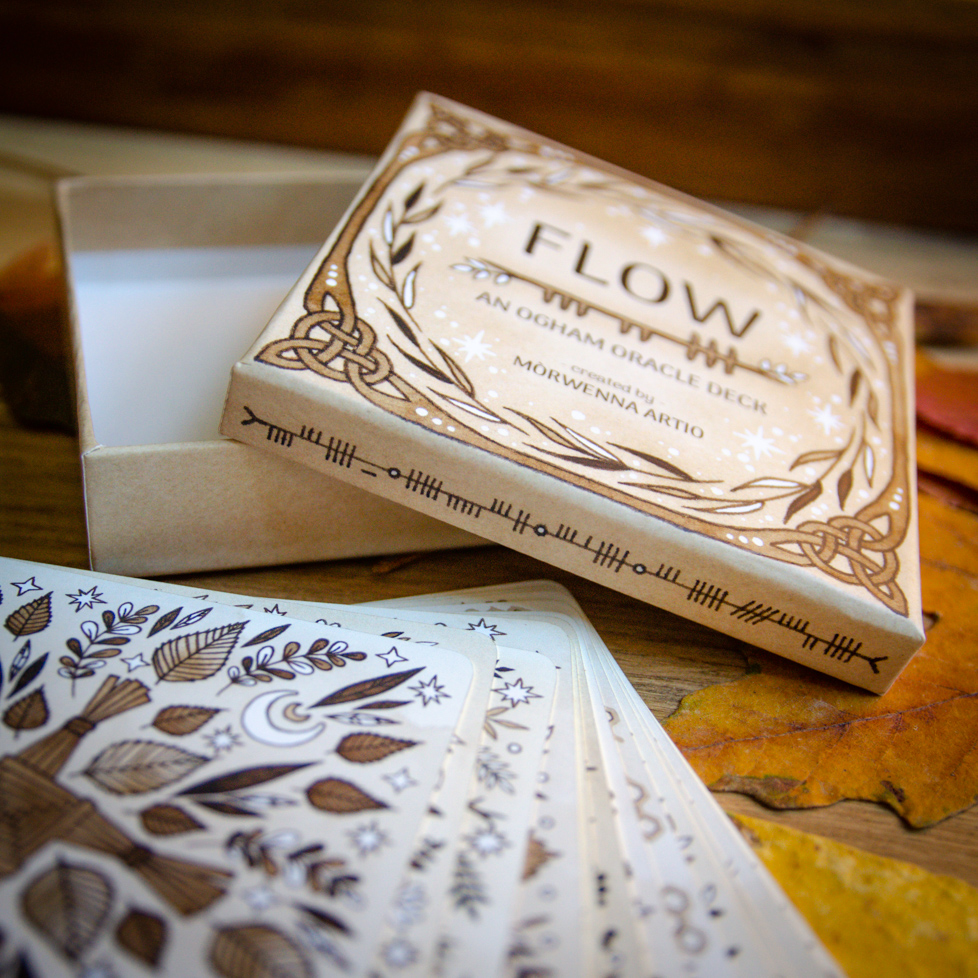
“This is their number: there are five groups of ogham and each group has five letters and each of them has from one to five scores and their orientations distinguish them. Their orientations are: right of the stemline, left of the stemline, across the stemline, through the stemline, around the stemline. Ogham is climbed as a tree is climbed. “
Auraicept na n-Éces – Translation of McManus
So the word Ogham refers to the entire alphabet, but the letters themselves are actually called feda (sing. fid) and each of them has a particular meaning, a name that can be translated into something recognizable. Some of these names come from different types of trees, like birch, oak, or hazel, which is why Ogham is frequently called the “Celtic Tree Alphabet”. In reality though, not all feda are drawing their meaning from trees and you will find a variety of significations such as “flame”, “wound”, or “garden”, and the same character can even have different ones depending on the sources and translations you’re looking at.
The Tree Ogham is without a doubt the most well-known Ogham alphabet today, but it is far from being the only one. Yes, you heard right, there are plenty of them: a Color Ogham (Enogam), a Bird Ogham (Dathogam), another one entirely dedicated to agriculture (Ogam Tirda)… There are about a hundred different variations listed in Auraicept na n-Éces, one of the three main sources of the manuscript tradition about Ogham (the other ones being In Lebor Ogaim and De dúilib feda na forfed).
🌿 Ogham resources and studies
Okay, first let me get this straight: in the modern paganism sphere, the Ogham alphabet is mainly known through the work of Robert Graves in his book The White Goddess. Undeniably, you’ll find poetic depth, beauty, and inspiration in this text, but it probably shouldn’t be seen and used as the reference to engage in a study of Ogham. That book and most of its content have been discredited by several scholars, including Robert Grave’s grandfather, Charles Graves, a specialist of the Irish alphabet himself.
Now there’s a lot of stuff gravitating around the Ogham today but, unfortunately, most of it has nothing to do with it really. For example, one quick Google search will surely bring you to the idea that an ancient Celtic Tree Calendar existed, with a different type of tree ruling over each month or so. A couple of minutes later you’ll find yourself looking at some info about your so-called “Birth Tree” and what it symbolizes according to the “Celtic culture” (which isn’t really a thing either by the way).
It’s all fun and games and I’ll admit, we don’t have a lot of info about the mysterious Ogham and its original purpose or meaning to work with. There’s not a lot of medieval manuscripts that have survived to this day and the Ogham stones that did don’t come with an explanatory guidebook. It is frustrating when you are just trying to learn as much as you can about it.
In the end, I guess we’re just trying to fill the dots. I totally understand that and I can appreciate the creativity behind some of these modern inventions. It can be nice to play with the idea of a Celtic Tree Astrological Chart or whatnot. Personally I’m fine with it as long as it doesn’t claim to be historically accurate. But at the same time, I find it really sad that proper research and academic work aren’t as much taken into consideration by the majority of modern days pagans and witches.
🌿 Ogham is the new Futhark?
Again, let me set something straight right in the beginning: as far as we know, there’s no link between the two alphabets. Or at least not between Ogham and the Elder Futhark. In Auraicept na n-Éces, the Young Futhark is actually mentioned and introduced as a “Viking Ogham” or “Ogham of the Norsemen”. That little detail is quite ironic considering that these days, the feda are the ones often called “Celtic Runes”, probably due to the fact that the Norse alphabet has gained a lot more traction than its western counterpart.
The alleged connection between Ogham and Runes probably comes from the 19th century, where the shroud of mystery around the alphabets appealed to Romantics and occultists of all kinds. Apparently, mixing two very different cultures together wasn’t something they found problematic and they quickly began making assumptions to try and link the two systems together. In reality though, they don’t have much to do with each other, except for the fact that both are made of twenty-ish characters with particular meanings attributed to each of them.
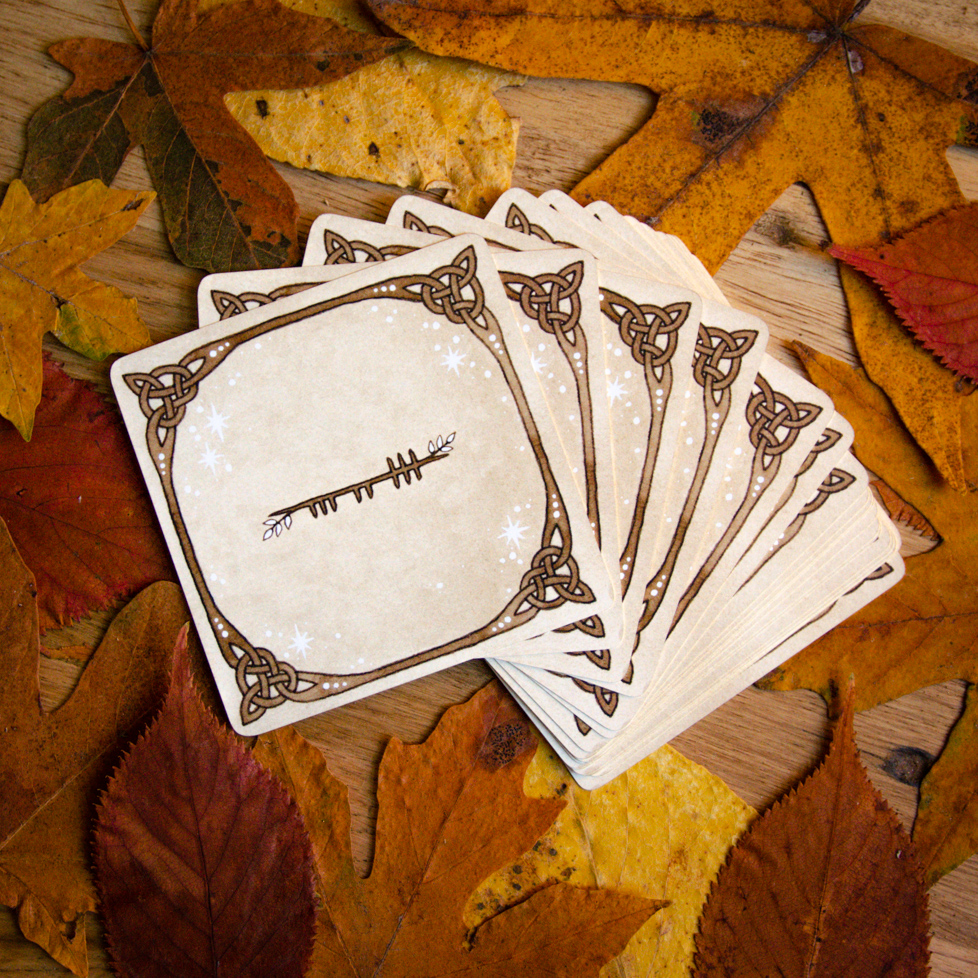
🌿 A druidic alphabet?
There’s one last assumption or general belief that I want to touch on, and it is the idea that Ogham comes from and was used by Druids.
Druids were members of a high-ranked class in ancient Celtic cultures, and almost all mentions of them in written sources disappear around the 1st or 2nd century CE, following the Roman invasion of Gaul that led to massive suppression of Celtic traditions and religious practices. On the other hand, it is generally admitted that the first inscriptions in Ogham only date back to the 4th century CE (the Runes had not yet traveled much around Europe at that time), although some argue that its origin could have taken place as early as the 1st century BCE.
There are two main schools of thought here (plus a handful of less favored theories), each of them fueled by different arguments regarding the motivation for the creation of Ogham. The thing is, we might never know the truth about it due to the unfortunate lack of historical resources. Arguably though, the idea that it was invented by early Christians in order to bridge the Latin alphabet with primitive Irish, two languages with considerable phonetic differences, is the most reasonable and plausible theory out there.
I know, right? Christians creating the Ogham system? Surely for a lot of today’s Pagans that doesn’t seem as much appealing as a group of wise bearded men in white cloaks living in harmony with Nature.
🌿 The origin of Ogham
So you want to study Ogham and I’ve just discouraged you from looking at its history with all my talk about the lack of resources. Well, let’s try and go back to its roots anyway (see what I did there?). The first Ogham inscriptions seem to appear on several stones and monuments dated back to the 4th century. Most of them are found in Ireland but a few have been living in Wales and in the South West of England. The majority of these stone inscriptions are just personal names, considered to be funerary markers or property boundaries, which doesn’t give us much of anything if we’re looking to introducing Ogham in our modern spiritual or magical practices.
What is really interesting for today’s seeker to look into are the three surviving manuscripts which contain most of what we know about Ogham: Auraceipt na n-Éces (also known as The Scholar’s Primer, which I mentioned a few times already), In Lebor Ogaim (The Book of Ogams or Ogam Tract, a copy of which can be found in the Book of Ballymote alongside the Auraceipt), and finally De Dúilib Feda Na Forfed (in which you can find mentions of the forfeda, the five additional letters).
Inside of these texts, you’ll find what’s called the Bríatharogaim, which basically means “Word Ogham”. If you’re familiar with the use of kennings in Old Norse, Icelandic, and English cultures, well it’s pretty much the same here: we’re talking about a figure of speech using poetry and figurative language to describe something instead of relying on a more straightforward single-word noun. There are only three variants known for the Irish Bríatharogaim, and all of them are composed of two-word kennings.
Conveniently enough, you can find these lists and their translations on the Bríatharogam Wikipedia page. What you’ll also find there is yet another mention of the fact that Ogham doesn’t equal “Tree Alphabet”.
“Later Medieval scholars believed that all of the letter names were those of trees, and attempted to explain the bríatharogaim in that light. However, modern scholarship has shown that only eight at most of the letter names are those of trees, and that the word-oghams or kennings themselves support this. “
But I guess that’s part of the magic of kennings: just as with poetry, you can be free to interpret their meaning in whatever way works best for you 🙂
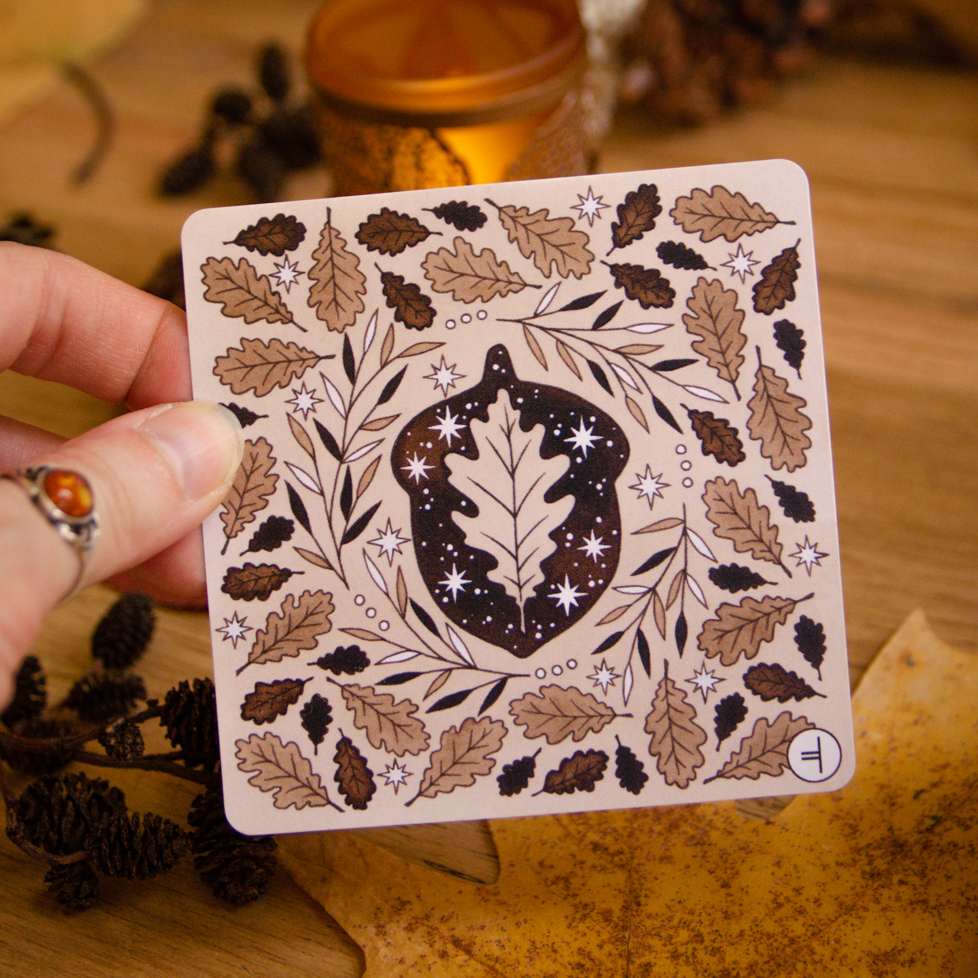
🌿 The use of Ogham
What was Ogham for when it was first created? What was the motivation behind it? How was it used? As I mentioned before, many different theories still coexist today, with several of them describing the use of its characters as a cryptic secret form of communication while others insist on giving Ogham some sort of magical proprieties.
One thing is certain though, the alphabet was actually used for teaching grammar and Gaelic poetry. We know that during the first years of its studies, the fili, a novice of the Bardic Arts, would have to learn and remember about 150 different lists of Ogham! Repeating these lists and playing with them was the perfect way to enrich their vocabulary as well as their skills with words and locutions.
And what I personally find the most fascinating is the way words play in the etymology of filidecht, the name given to this learning practice. In Old Irish, it can be translated as “poetry”, but it also carries the meaning of “divination”. And the fili, the practitioner of this Art, is not only a poet but also a seer.
This is how I’d like to end the first part of our Ogham study, by bridging the two together and make the connection between traditional Ogham and its modern use in divination (and by extension, magical practices in general). And for once, it is actually a connection that makes sense and has its roots in facts.
🌿 Glossary
✨ Aicme (plur. aicmi): Group of five characters sharing the same structure within the Ogham alphabet. Originally there are four aicmi, five once you add the forfeda.
✨ Bríatharogam (plur. -ogaim): Two-word kenning or poetic locution used to describe and explain the meaning of each letter of the Ogham alphabet.
✨ Fid (plur. feda): Letter in the Ogham alphabet.
✨ Fili (plur. filid or file): Poet and seer, practitioner of filidecht.
✨ Filidecht: Traditional Gaelic poetry. Also, divination. Modern definitions may include the study and learning of myths and traditions related to magical practices.
✨ Forfeda: Group of five additional letters forming the fifth and last aicme.
✨ Ogham (or Ogam): Old Irish alphabet composed of 20 or 25 letters. Traditionally pronounced “oh-am”, skipping the “g”. A more modern monosyllabic variant makes it more similar to the Sanskrit word “aum”.
✨ Ogma (or Ogme, or Ogmios): The father of the Ogham alphabet. According to Irish and Scottish mythology, Ogma is the deity who created the Ogham alphabet and gave his name to it.

Learn more about Flow and the Ogham:
About the Deck (coming soon!)
The Ogham Alphabet
Interpretation of the Cards
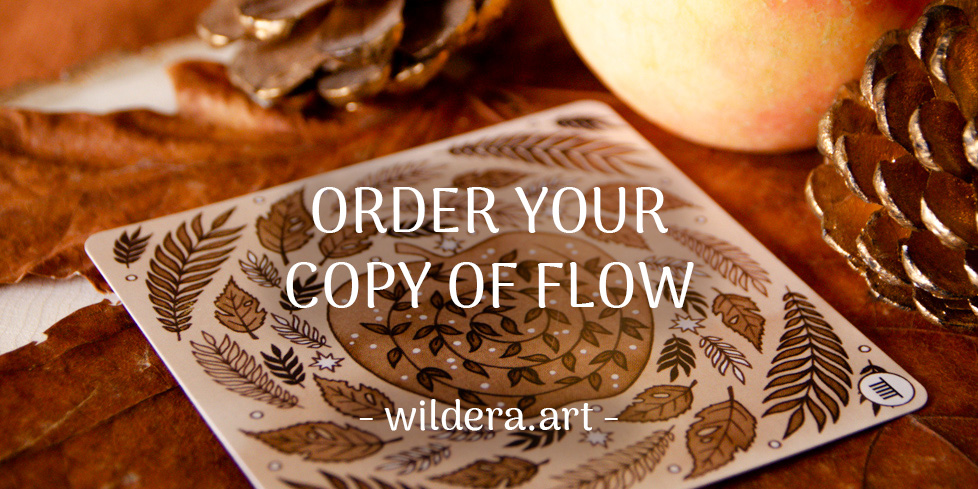
Don’t miss out! First edition limited to 250 copies, all signed by the author – yours truly 💛🌿
Discover more from Wildera Art · Blog
Subscribe to get the latest posts to your email.